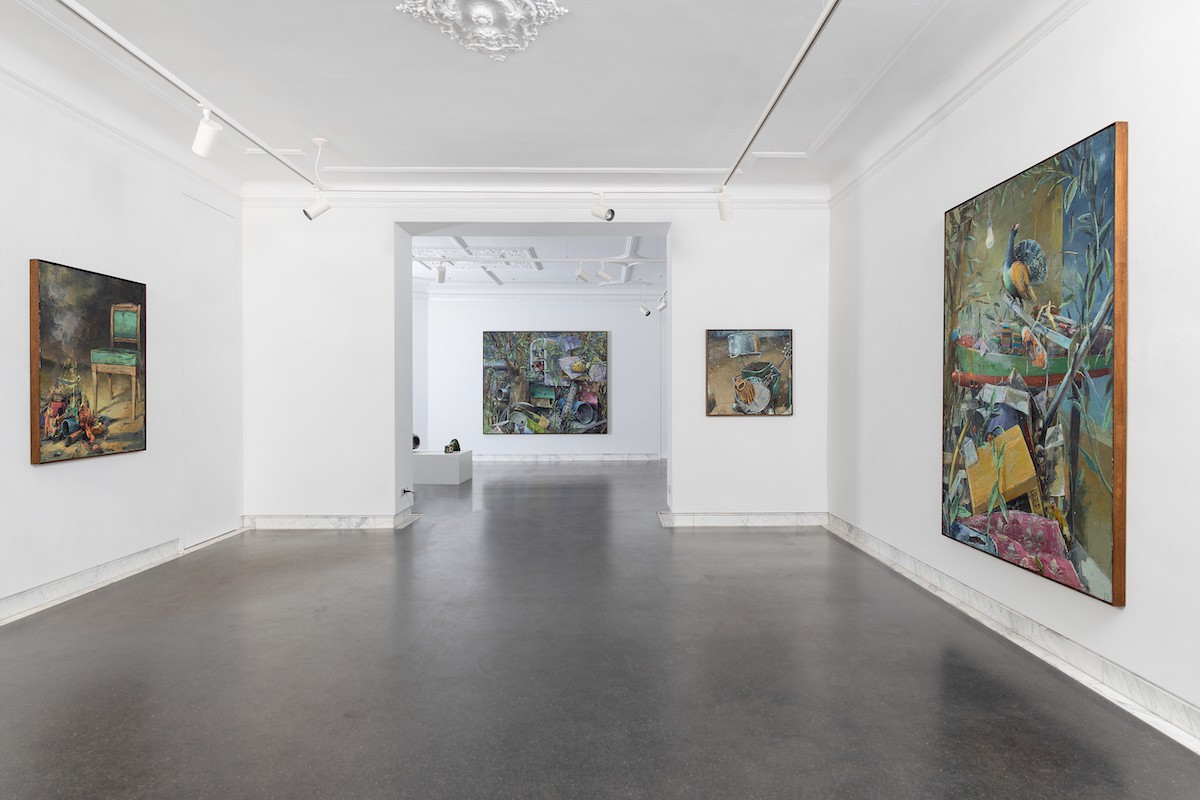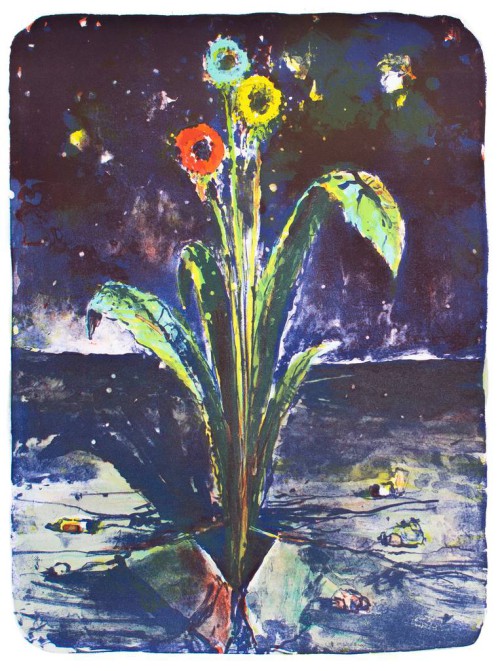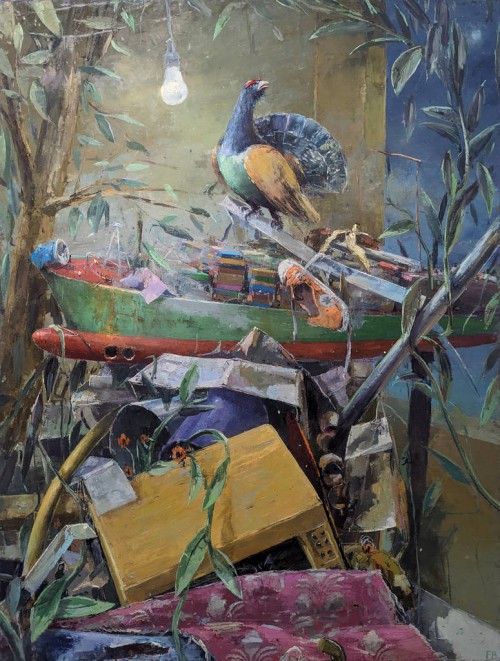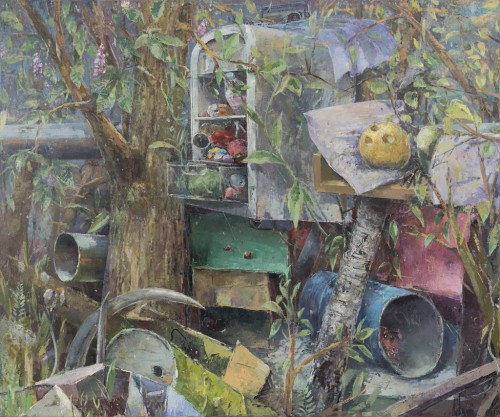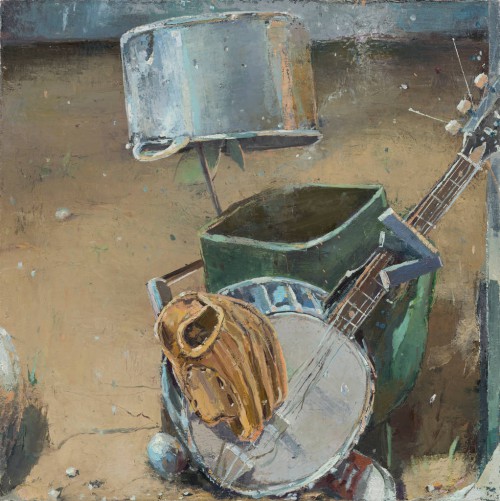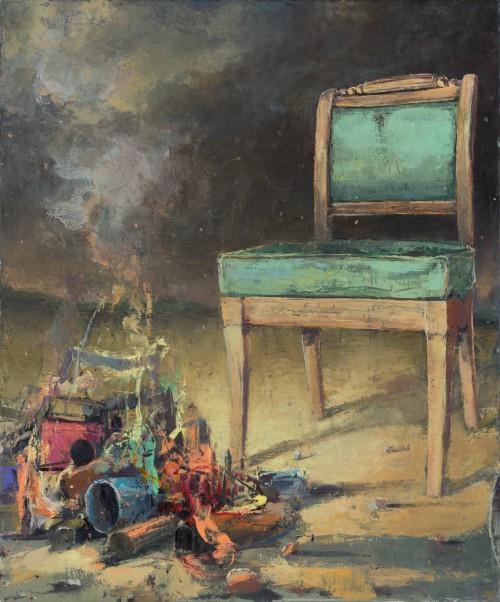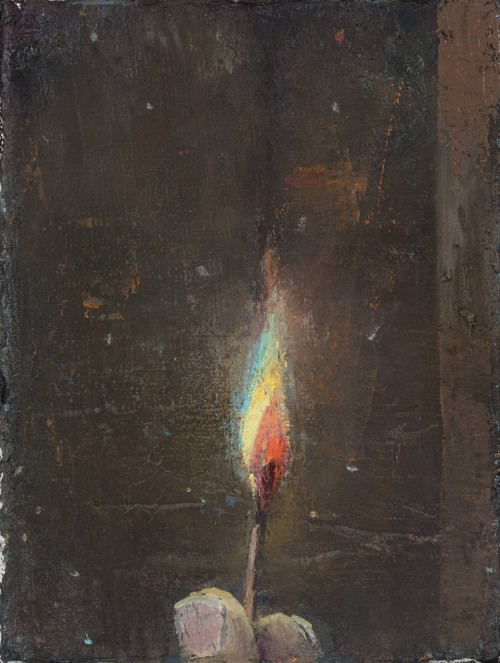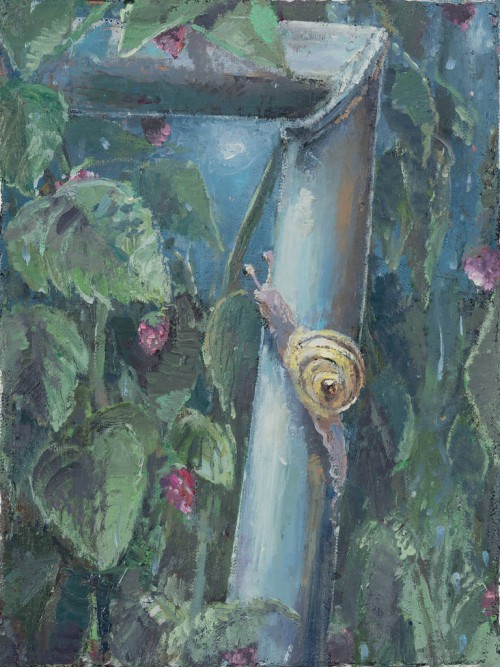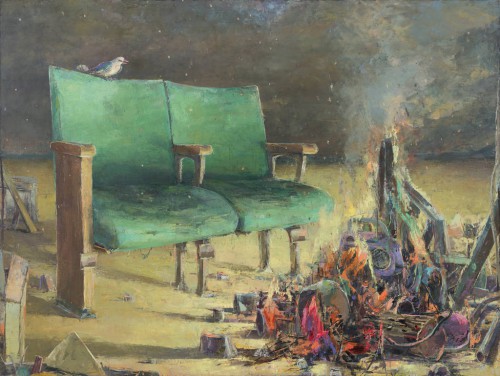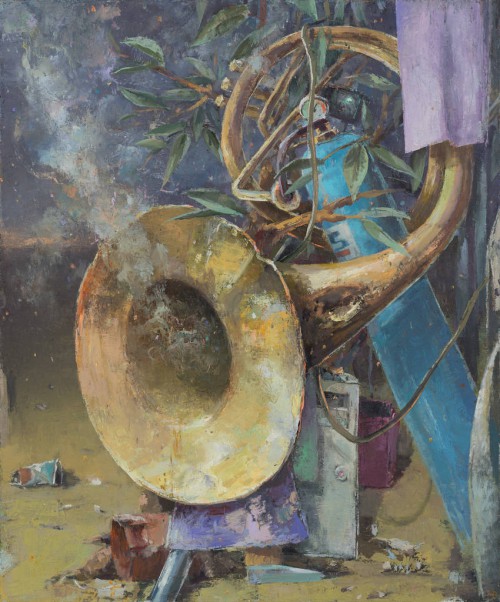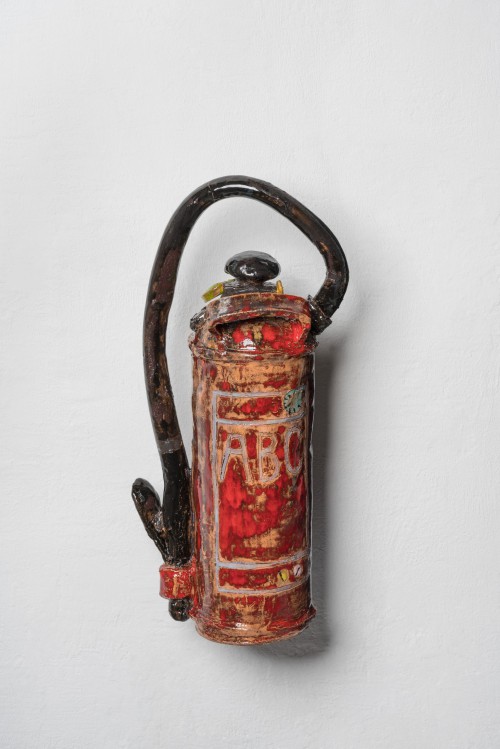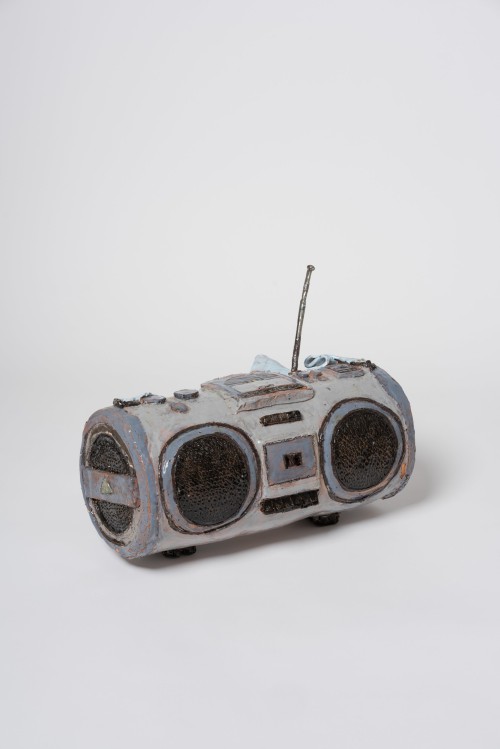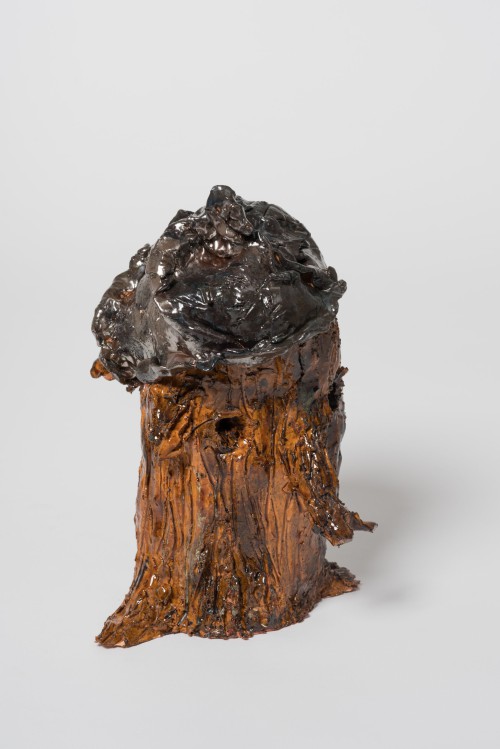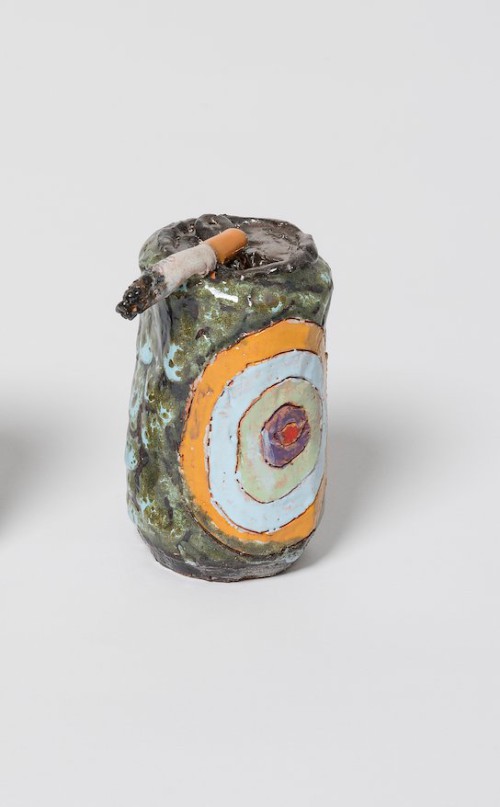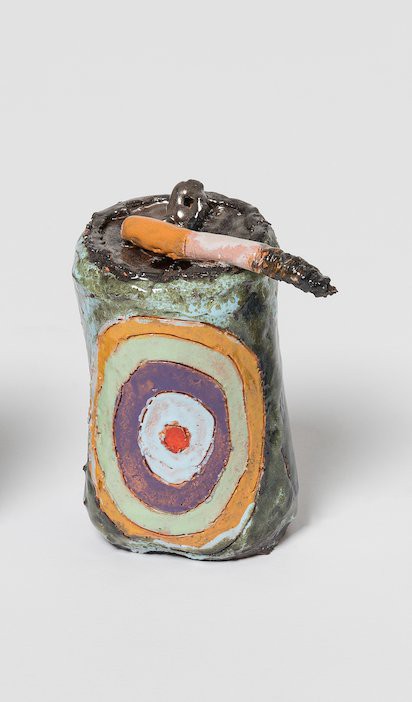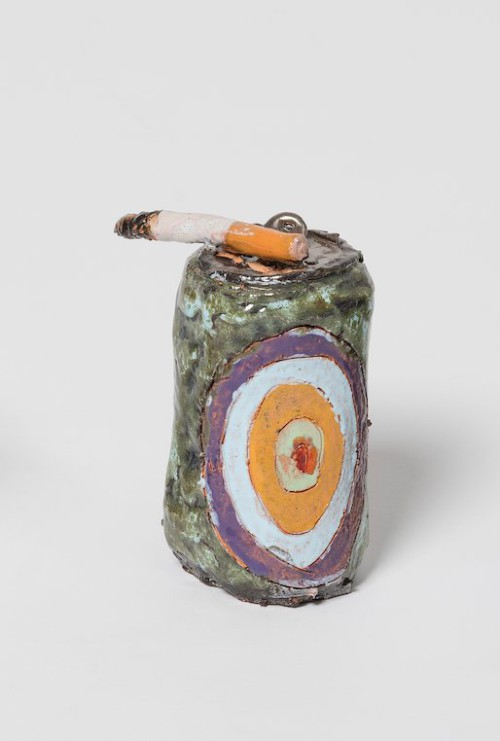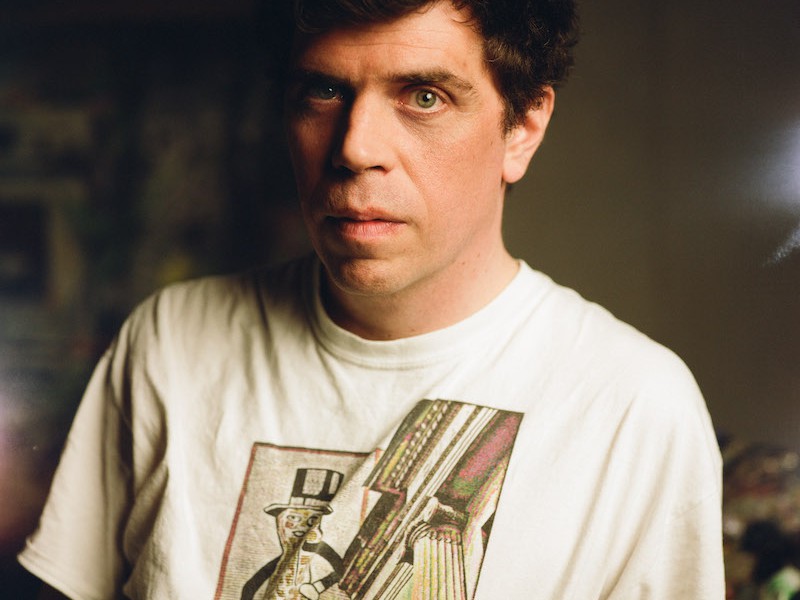Information
You think you know them, these places, these compositions of old things, of rubbish, of idyllic vegetation. You don't discover them by strolling, rarely by walking. To get here, you have to roam around, follow an urban explorer's instinct, leave paths, look for hiding places. Children and young people are best at this, but so are homeless people or graffiti sprayers. And then they appear, the traces of the heavy objects, the technical legacies from past decades. Like a whispering bag from the 1920s, musical instruments, fire extinguishers, drawers full of stuff vendor's tray from the cinema or a Converse Chuck shoe. Ambitiously piled high, romantically dropped down or burning warmth in a fireplace. Together they act like fertilizer, through them weeds blossom paradisiacally. After a few moments of contemplation, it finally becomes clear that Fritz Bornstück's pictures do not show real places, they only seem that way at first glance. They are un-places, exposed in hidden places and relocated in a fictitious map of the world. Larissa Kikol
Installation









